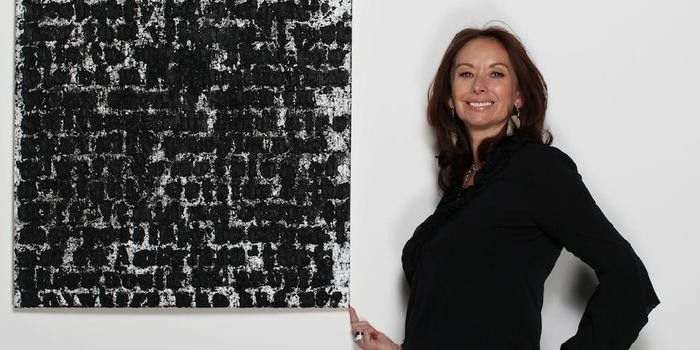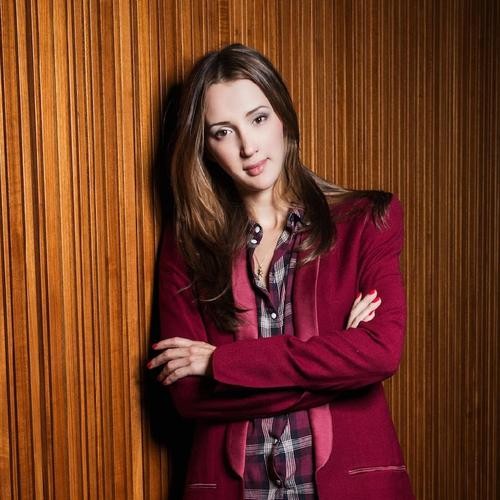As two of the world's most prominent collectors of contemporary art, Anita Zabludowicz and her husband, Poju, have amassed enough work over their four decades of collecting to fill not only their homes but also elegantly appointed public exhibition spaces in London and New York. However, the couple stands apart from the majority of the elite collector class in one critical regard: unlike those who spend millions to amass small treasure troves of work by Gerhard Richter, Jeff Koons, or other market darlings, these London-based collectors focus their attention almost exclusively on emerging and mid-career artists.
As a result, the Zabludowicz Collection, founded in 1994, occupies a special position in the contemporary art landscape, affording critical sustenance for fledgling artists as they build their careers—and often providing a launching pad for the kind of future art stars sought after by other collectors. One way that the duo lends this support is through the Zabludowicz Collection's editions program, which offers artists they support the opportunity to create low-cost editions that make their work widely accessible to in-the-know audiences. To find out more about the thinking behind the editions, Artspace editor-in-chief Andrew M. Goldstein spoke to Anita Zabludowicz about her approach to collecting, and which emerging artists she is excited about today.
COLLECT EDITIONS FROM THE ZABLUDOWICZ COLLECTION AT RIGHT
How did the Zabludowicz Collection editions come about?
We see all our activities as philanthropic—everything we do is not-for-profit, and when we decided to take our collection to the public we also wanted to encourage the public to start collecting. We decided the way to do it was to ask the young artists we were showing and collecting—many of whom do not sell a lot of work, and perhaps only just survive off the income from their art—to work with us to make small works, in very limited numbers, to sell cheaply to new collectors. We were idealistic and still are. We hope that the works are rewarding to people who buy them—they're little gems, and real works of art.
As among the world's leading collectors, you are rare in focusing mainly on emerging artists, rather than established blue-chip stars. What inspires that approach?
Working with emerging artists means pushing the barriers, bringing new ideas to the table, and moving things forward generally. All of this make emerging art very rewarding. When you're working with blue-chip artists there are usually fewer surprises, and who doesn’t like surprises?
How would you characterize the art that you collect?
I'm most attracted to innovative art—I have a passion for art that employs new mediums or materials that haven't been used before. At the moment that might mean digital, or it might mean different forms of language. New modes of painting and photography can also be inspirational, and while this happens rarely, when it does it's incredible.
Which artists would you say are at the heart of your collection?
The heart—and the start, which is to say the foundation—of the collection is art photography from the 1990s by such living legends as Wolfgang Tillmans, Andreas Gursky, and Gregory Crewdson. But now that heart has grown to include such mid-career artists as Keith Tyson, Jim Lambie, Michael Landy, and Albert Oehlen. Then there are the younger artists: Matthew Day Jackson, Toby Ziegler, Ryan Gander, Kelley Walker, Ed Atkins, Laurel Nakadate, Walead Beshty, and Haroon Mirza. Some are not so young in age, but their freshness and influence is!
How would you describe your collecting style? How has it evolved over time?
My collecting style has certainly evolved through the years. It was very pure in the beginning—we concentrated only on photography—but soon I was distracted, looking at video art, painting, and sculpture. Then from there I became interested in conceptual practices. It was obvious that we would need a platform to show these works, as they were by young emerging artists. Now our collecting is much more focused: we concentrate on emerging artists and collecting a few artists in depth.
What was it that first made you interested in art?
I grew up with art. My mother was very much my influence—she was an historian and would take me to all the museums.
What was the first artwork you ever purchased?
The first artwork I ever purchased was a Ben Nicholson painting at Sotheby's in 1994. After four years of research and education, I was so nervous that I actually bid against myself.
You have founded a residency program on an island in Sarvisalo, Finland, that allows artists to develop their art in a placid, bucolic setting. Among the artists who have participated are Sarah Braman and Erin Shirreff, both critically acclaimed rising stars. What inspired you to create the residency program, and why did you decide to set it in Sarvisalo, aside from your Finnish husband's ties to the country?
Sarvisalo is a place of real natural beauty. My family and I have been going there for over 25 years, and my husband had been going there since he was a child. At a certain point many people decided to move away from the island and leave their wonderful estates, so we decided to look after them and began to feel a responsibility towards the island and the community. We wanted to create something very special, and the only way we knew to do this was by inviting artists to come and join us there and in a small way create a response to the changing environment and situation there.
You have two state-of-the-art exhibition spaces for your collection, one in a Corinthian-style former chapel in London and one in the bustling heart of New York's Times Square. Why do you feel compelled to share your art collection with the public?
I think art needs an audience, especially when artists are working out what they are trying to do and say. It's then that the most interesting conversations can be had between the artist, the work, and the public who comes to see it.
As a patron, art collector, and curator, what role do you hope to play in the art world?
I hope the part I play in the art world has some influence. However, I’ll never know directly in what way.
Which emerging artists are you particularly interested in right now?
I could give you a very long list! But some of the New York City painters, like Ned Vena, Rosy Keyser, Francesca DiMattio, and Garth Weiser. We have an exhibition program called "Invites" where we show younger unrepresented artists every month, and this has been successful—Hannah Perry, Heather Phillipson, and Benedict Drew are three of the highlights. In England we have work by a few very successful emerging artists, such as Matthew Darbyshire, Laura Buckley, Eddie Peake, Hannah Sawtell, Tereza Bušková, and my favorite, Jack Strange.
What advice to you have for collectors who want to collect work by emerging artists?
If you are thinking of collecting emerging art the words "market value" should not come into your mind. Collecting young artists is philanthropic in the old-fashioned sense of being a patron. The best way to start collecting emerging art is either by going to very young galleries, visiting the art schools, or by buying editions from reputable places—like Artspace.
How do you incorporate art into your everyday life? What impact has it had on you personally?
The artists that we collect become part of my life. We collect in depth, and over the years we have become friends with many of them. Also, I work full time in this field and it has obviously an impact on my private life. Artists are very much part of my everyday life and I honestly feel that art has enriched my life, helping me see things more broadly.
Where are a few of your favorite places to see art?
My favorite place to see, think about, and experience everything about art is of course at the Zabludowicz Collection in London! So far we have made over 17 shows, created educational projects, and developed many other programs. Also, I very much love the Tate—it has been part of our lives for many years. I am a trustee of Tate Foundation and enjoy visiting their many sites as often as I can. In London we are lucky to have so many wonderful institutions, though, and the Camden Art Centre, the Serpentine, and the Whitechapel all do consistently enlightening shows. Then, when in New York, I never miss a chance to visit MoMA.
If you could own any artwork in the world, what would it be?
I already own it: Keith Tyson’s Large Field Array, a work with 300 elements. One day it will fill a museum.



























